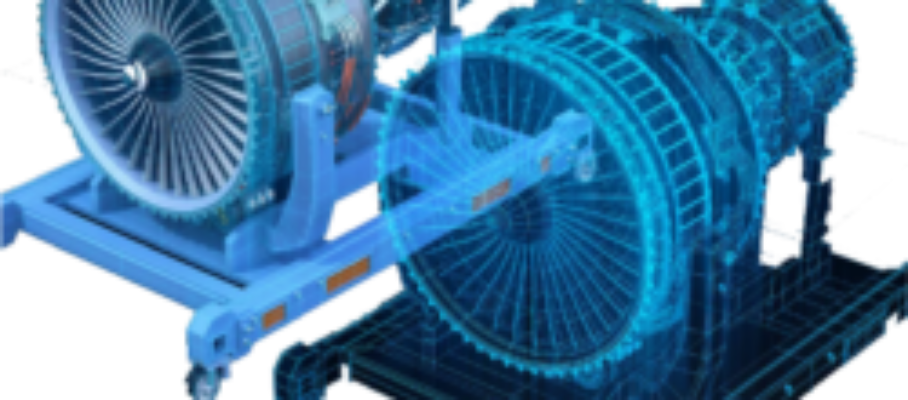Dec 1 2022
About Digital Twins
Some hosts showed digital twins during the Van of Nerds tour de France last September, but none mentioned the cyber-physical systems touted as a key component in Industry 4.0. Furthermore, we also found that the meaning of digital twin had drifted away from detailed simulations of physics and chemistry as part of a cyber-physical system for process control.
Instead, a digital twin is now an animation of part movements and machine status in a line for production control. This has effectively disabled discussions of digital twins in the context of cyber-physical systems, which matters in stabilizing and establishing capability for high-technology processes like additive manufacturing.
Contents
Cyber-physical systems and Digital Twins
A cyber-physical system is a computer system that you embed in a physical system to control or monitor it and to make it autonomous. The controller of a self-driving forklift qualifies; a mass flow controller with a simple feedback loop does not. A digital twin is a model you design to reflect a physical object accurately. It is a means of implementing a cyber-physical system.
As a label, “digital twin” rolls off the tongue more easily than “cyber-physical system.” It is both more evocative and memorable. Google “Digital Twin” today (11/29/2022) and you get 8,740,000 results; “Cyber-physical System,” and you get 1,140,000 results. This is almost 8 times less. Google Trends gives you a comparison of the popularity of the search terms over time, on a scale of 0 to 100. “100” is the highest popularity of either term. For “Digital Twin” this peak occurred in the summer of 2022.
Per Wikipedia, “Using cyber-physical systems that monitor physical processes, a virtual copy of the physical world can be designed. Characteristics of cyber-physical systems include the ability to make decentralized decisions independently, reaching a high degree of autonomy.” A “a virtual copy of the physical world” sounds very much like a digital twin.
From Kalman Filters to Cyber-Physical Systems
As described, cyber-physical systems are reminiscent of a technique from the 1960s used in navigation systems called Kalman filtering, in particular for the Apollo spacecraft. In 2022, control engineers apply it to sensor data in Arduino microcontrollers.
In navigation, the idea is to base course corrections on the combined location input from two flawed sources:
- Noisy measurements from external beacons.
- Integrated accelerations measured inside the vehicle which, over time, diverge from the actual position.
Kalman filtering involves deductions from a model. Hence the name “deduced reckoning,” or “ded. reckoning,” with periodic reality checks made with less-than-perfect instruments. In earth-bound flights today, the GPS has eliminated the swaths of space over oceans without ground beacons. However, Kalman filtering is still applied to GPS signals and Inertial Navigation Systems (INS). For more on the relevance of this technique in 2022, see Alan Zucconi’s series of blog posts about it.
What’s a Digital Twin?
The Industry 4.0 literature introduced digital twin as an approach to machine control. It has since come to designate animated displays of shop floor activity, as shown in the following figure:

What digital twin has come to mean
Given that discrete-event simulators to generate animations of a production floor have been around for >3 decades, this is not much of a technical innovation. On a smaller scale, visualizations of equipment used in process industries, with vital signs posted on icons for vessels, pumps, and valves, have also been available from SCADA systems.
These functions are less challenging than the concept of using a digital twin as part of a cyber-physical system, which is to run a simulation of a machine’s process concurrently with the process itself, automatically detect and resolve discrepancies between the simulated and actual process.
The ACAMM lab at the US Lawrence Livermore National Laboratory has been developing a simulation-based controller for additive manufacturing of metal parts by laser bed fusion, as a key to make this process capable. Their results from 2015 can be seen on livestream. Their simulator accounted for melting, solidification, sparks, and spatter, as shown in the following picture, and the control system dynamically synchronized it with the actual process. In 2018, the ACAMM lab received a $9M grant on “Digital Twin” technology.

Consequences of Vocabulary Engineering
If managers appropriate the term “Digital Twin” for another function, what should engineers use to communicate about the original?
This kind of vocabulary engineering is pervasive in manufacturing worldwide and impedes improvement. Under pressure from top management to show that they are using the latest tools, people in operations rebrand what they are doing with a new name.
Once enough organizations have renamed their reorder-point system “Kanban,” it becomes impossible to explain the actual Kanban system. Then what they do fails to improve performance. They conclude that “Kanban doesn’t work.” They abandon the name without having studied what it means or tried to apply the system.
#digitaltwin, #cyberphysicalsystem, #industry40

December 1, 2022 @ 1:16 pm
It is effortful to fully define your terms, but it often becomes necessary due to this drift. The misuse of original design gives that thing a bad name frequently. Another example is in strength training: you don’t get to redefine the exercise (squat or press) and then claim that it’s dangerous.
https://startingstrength.com/article/analysis_of_the_squat
The Van of Nerds in France—Overview and Aircrafts | AllAboutLean.com
December 4, 2022 @ 11:02 pm
[…] About Digital Twins […]
The Van of Nerds in France—Internal Logistics in Well Exploration and Military Products | AllAboutLean.com
February 1, 2023 @ 6:19 am
[…] About Digital Twins […]